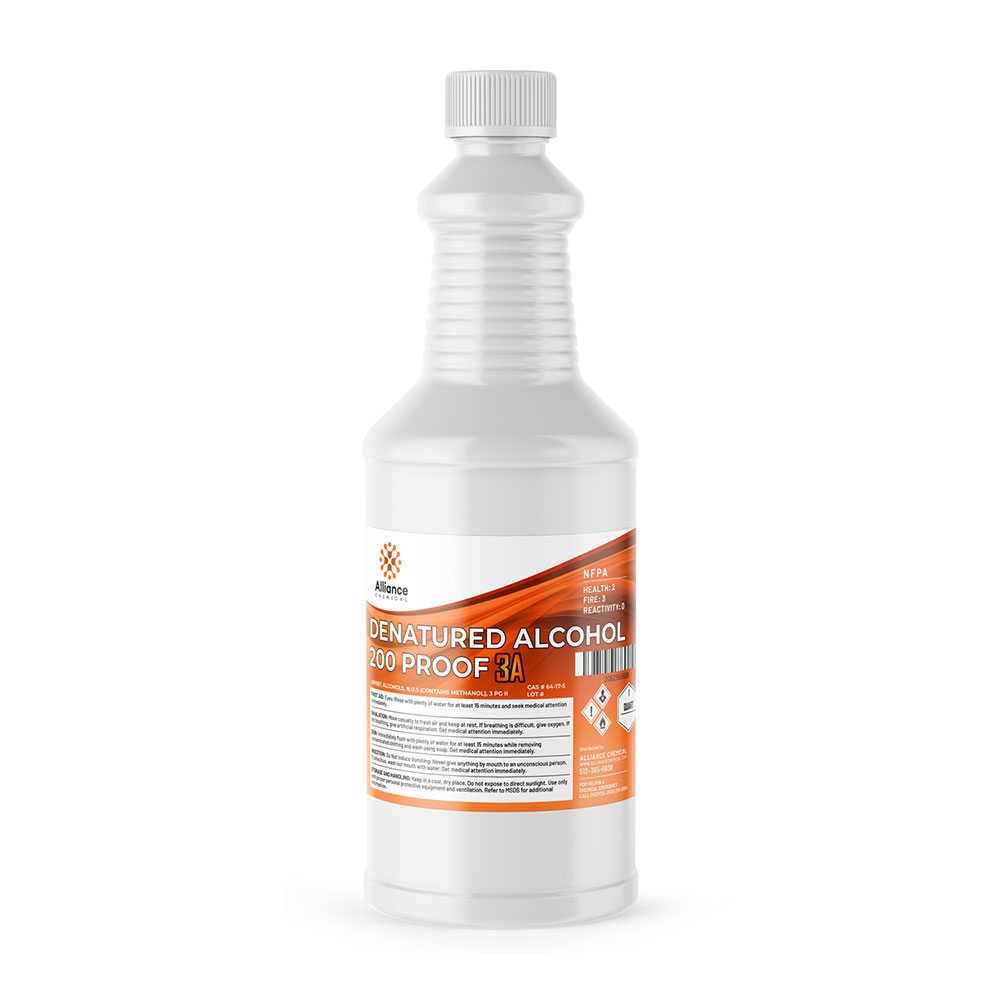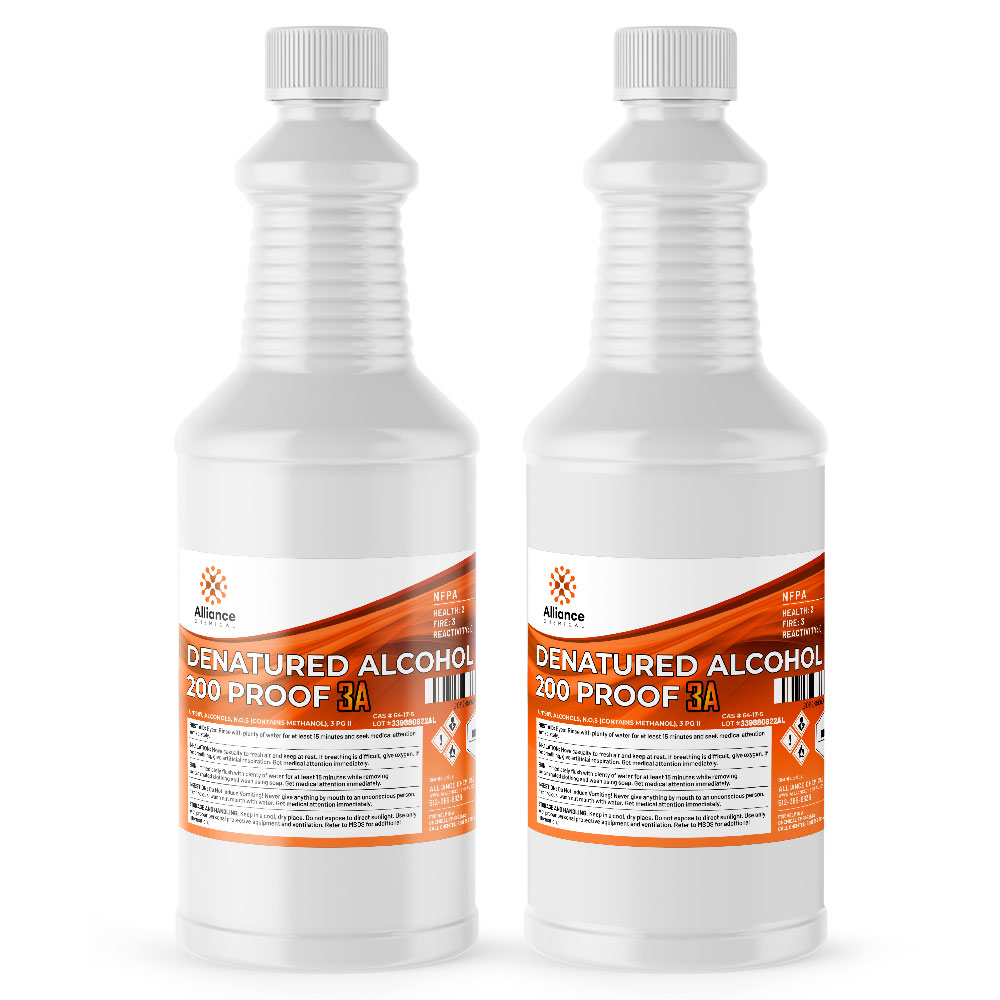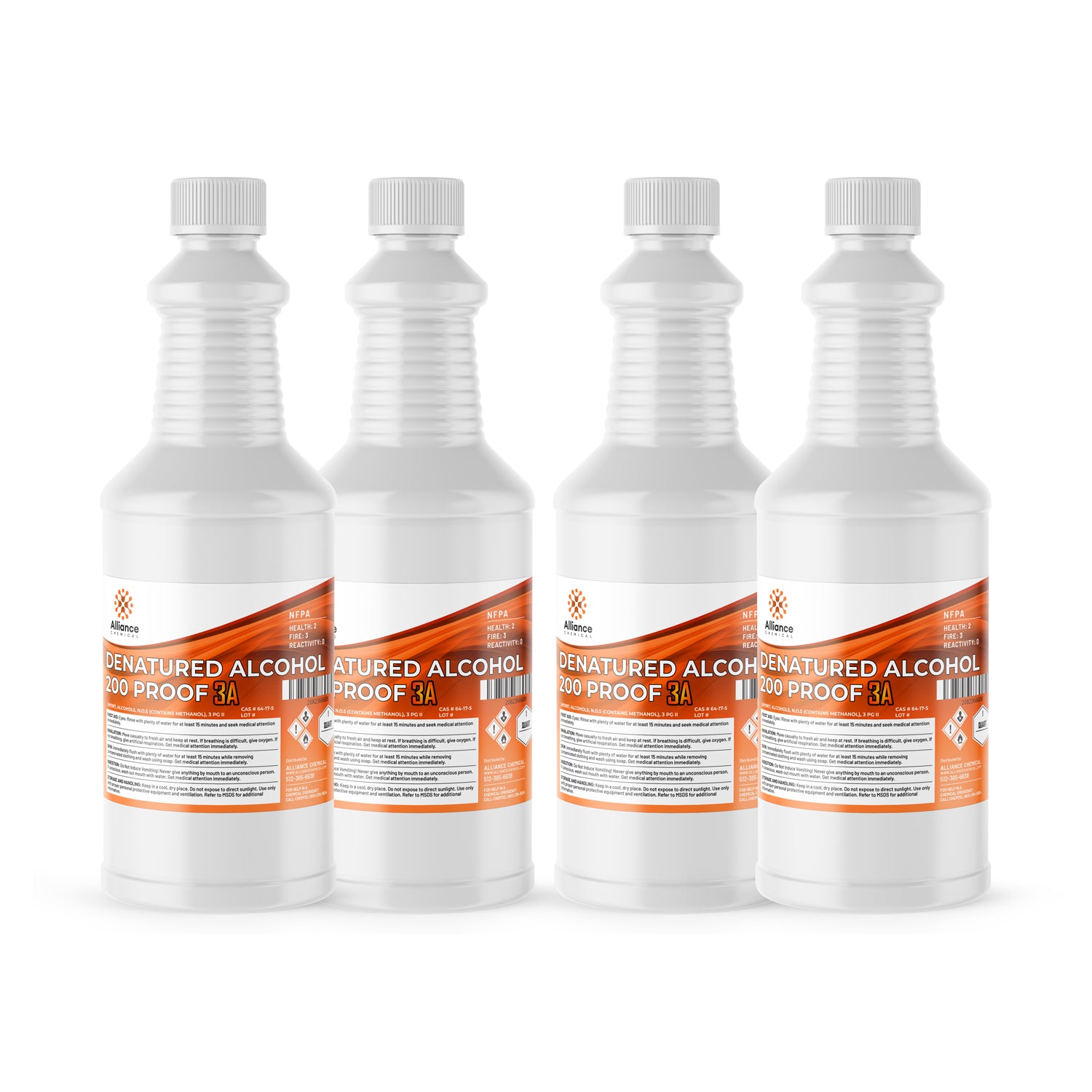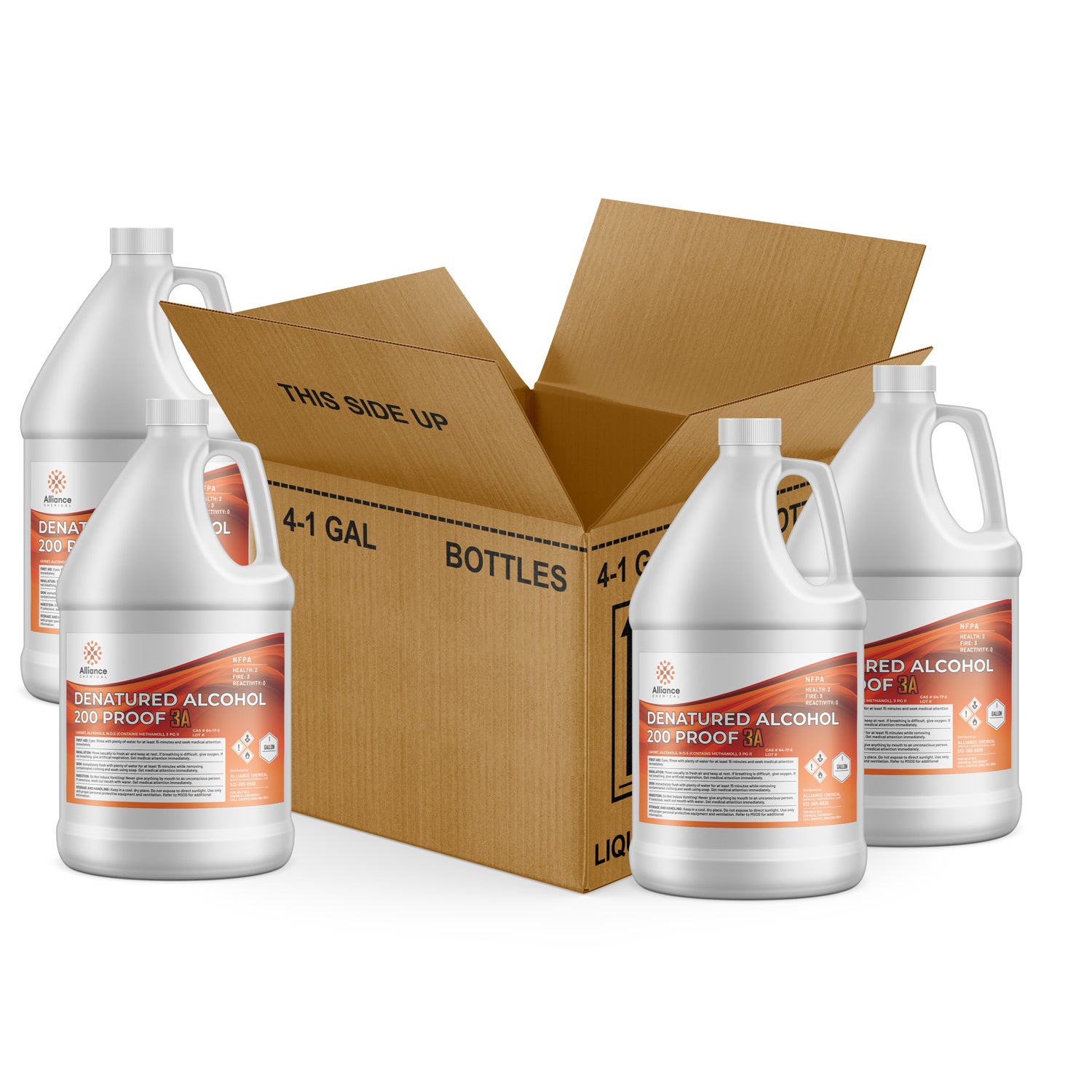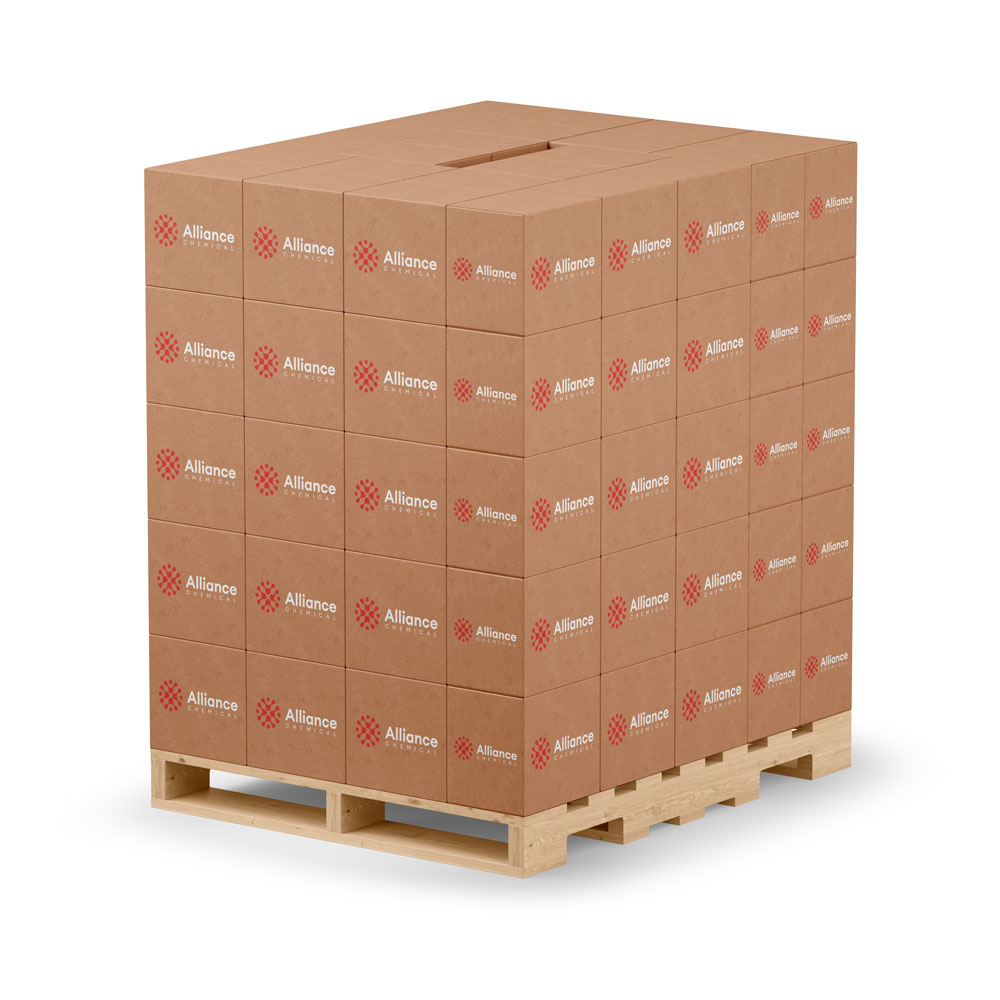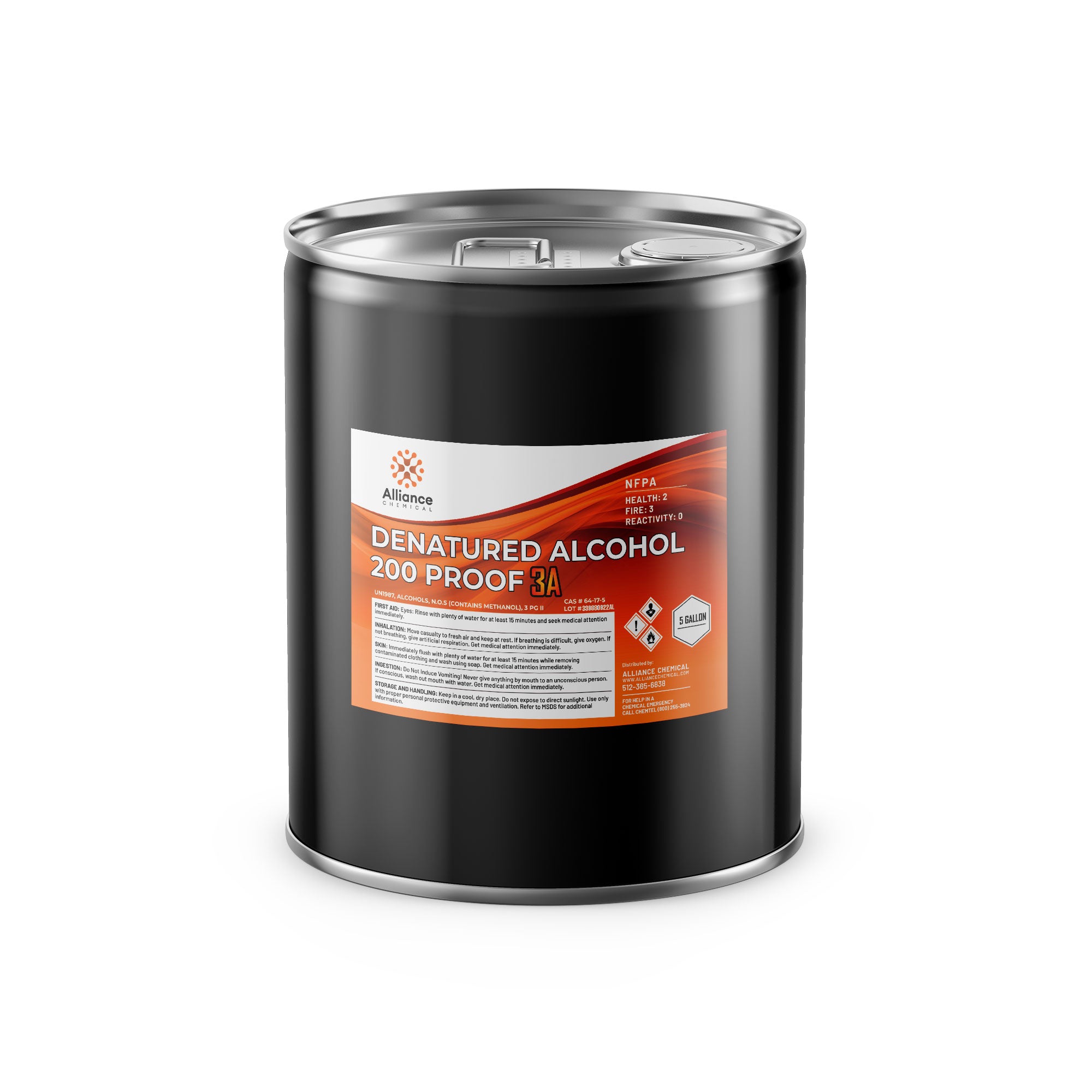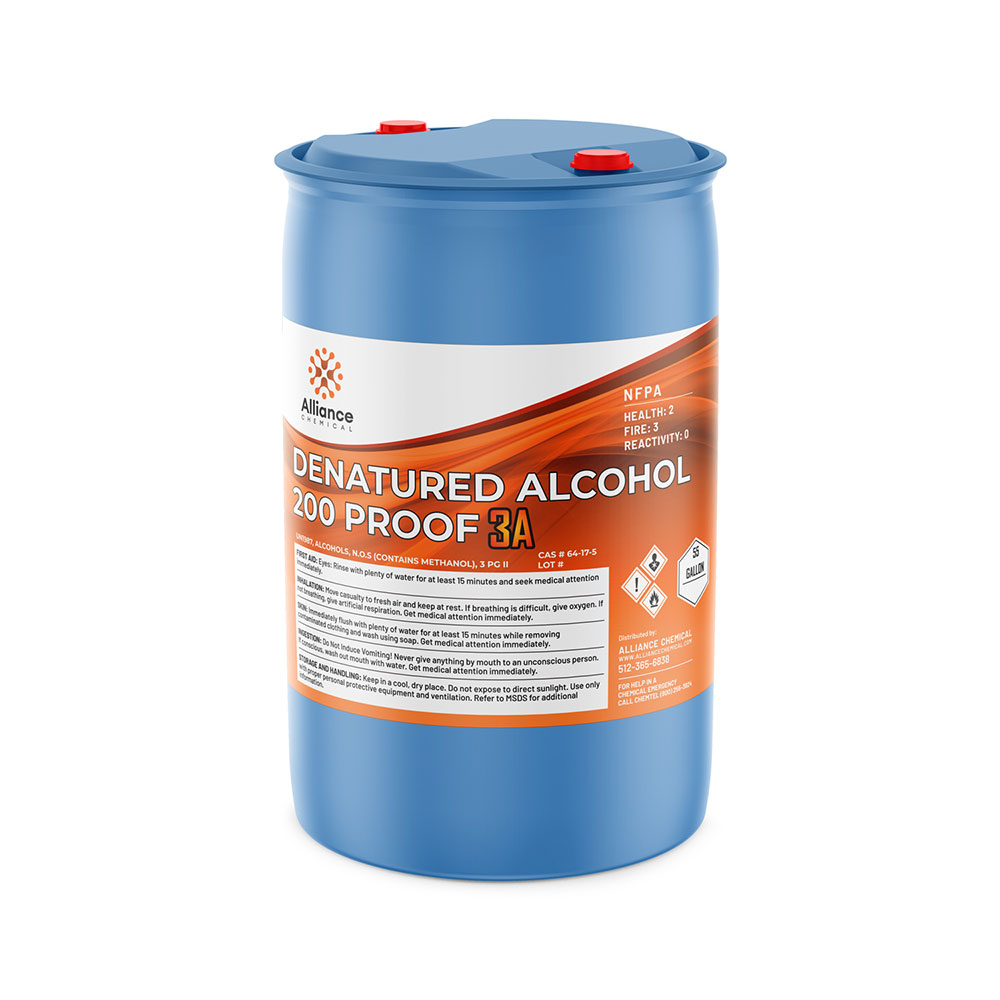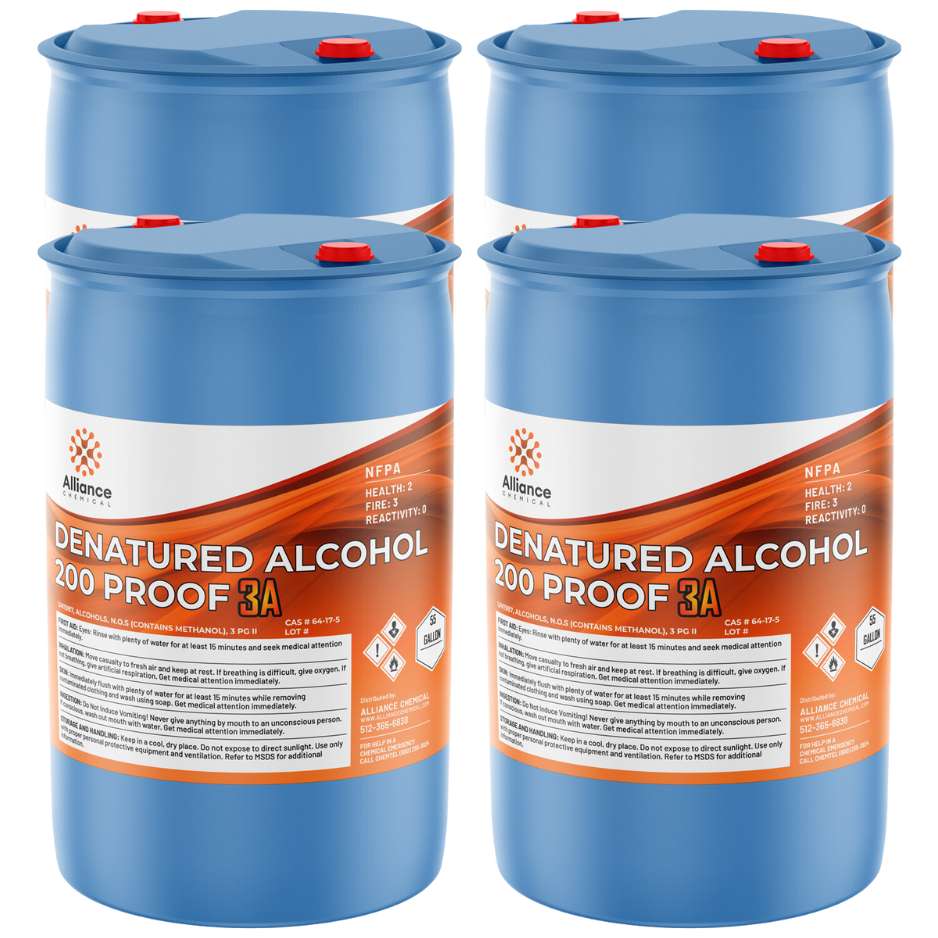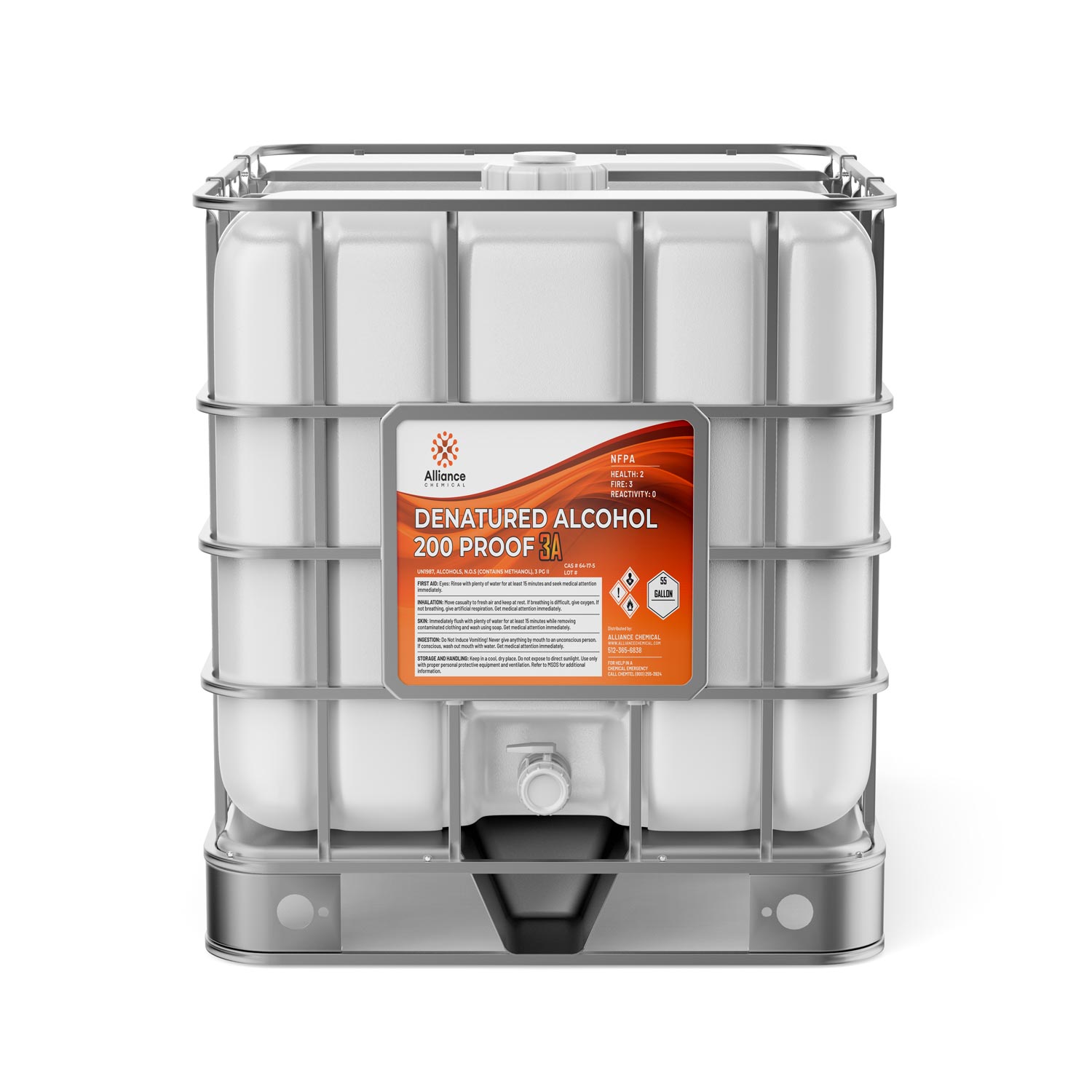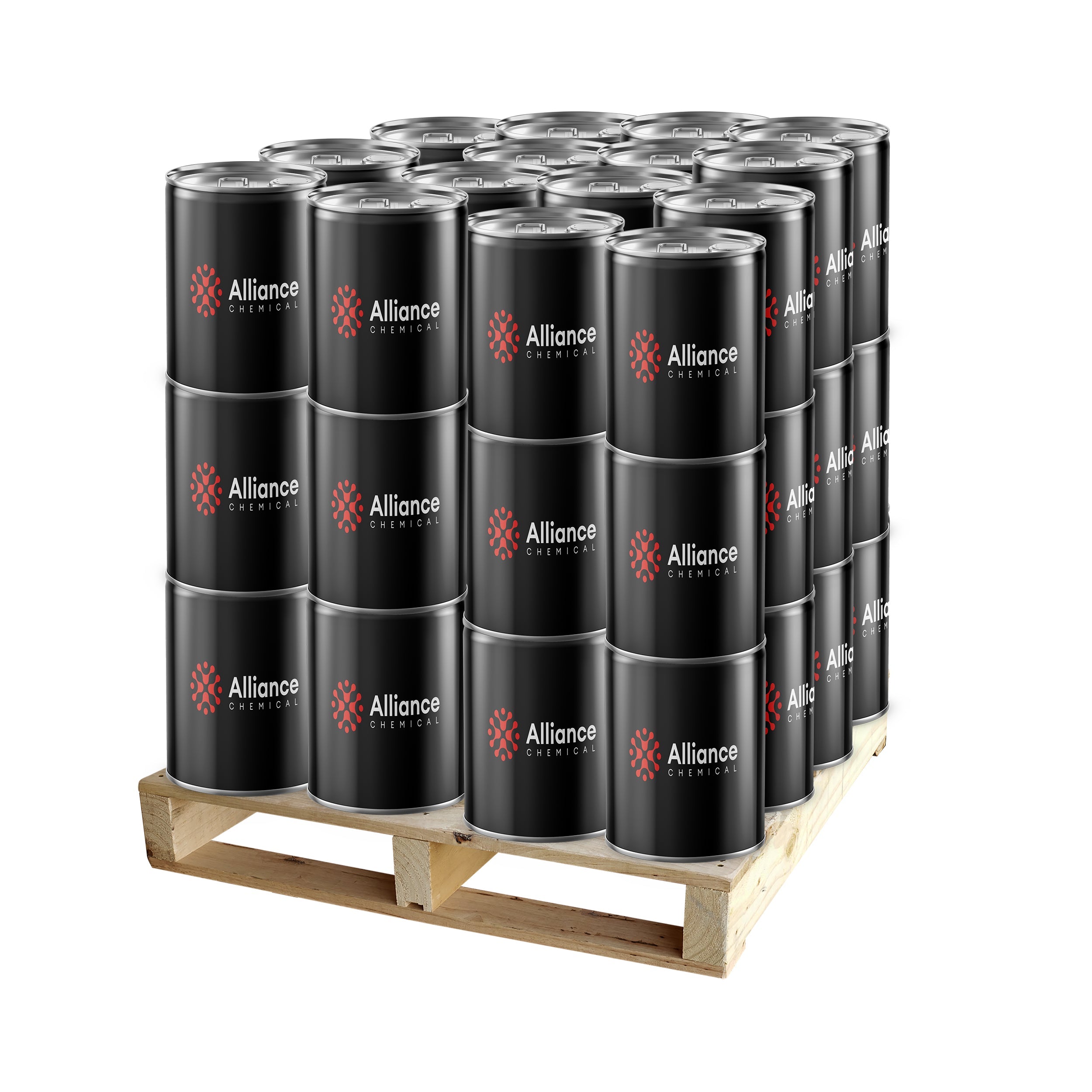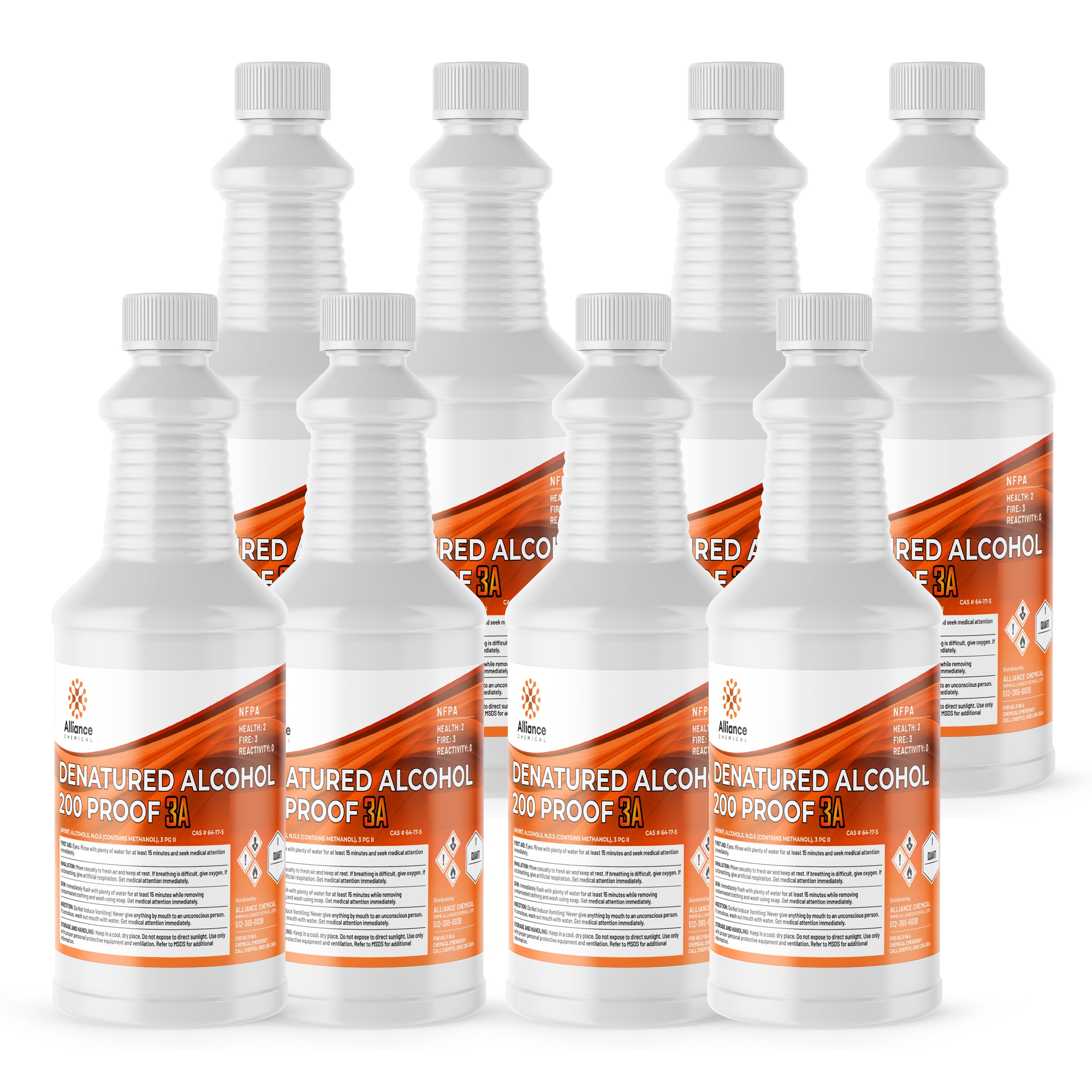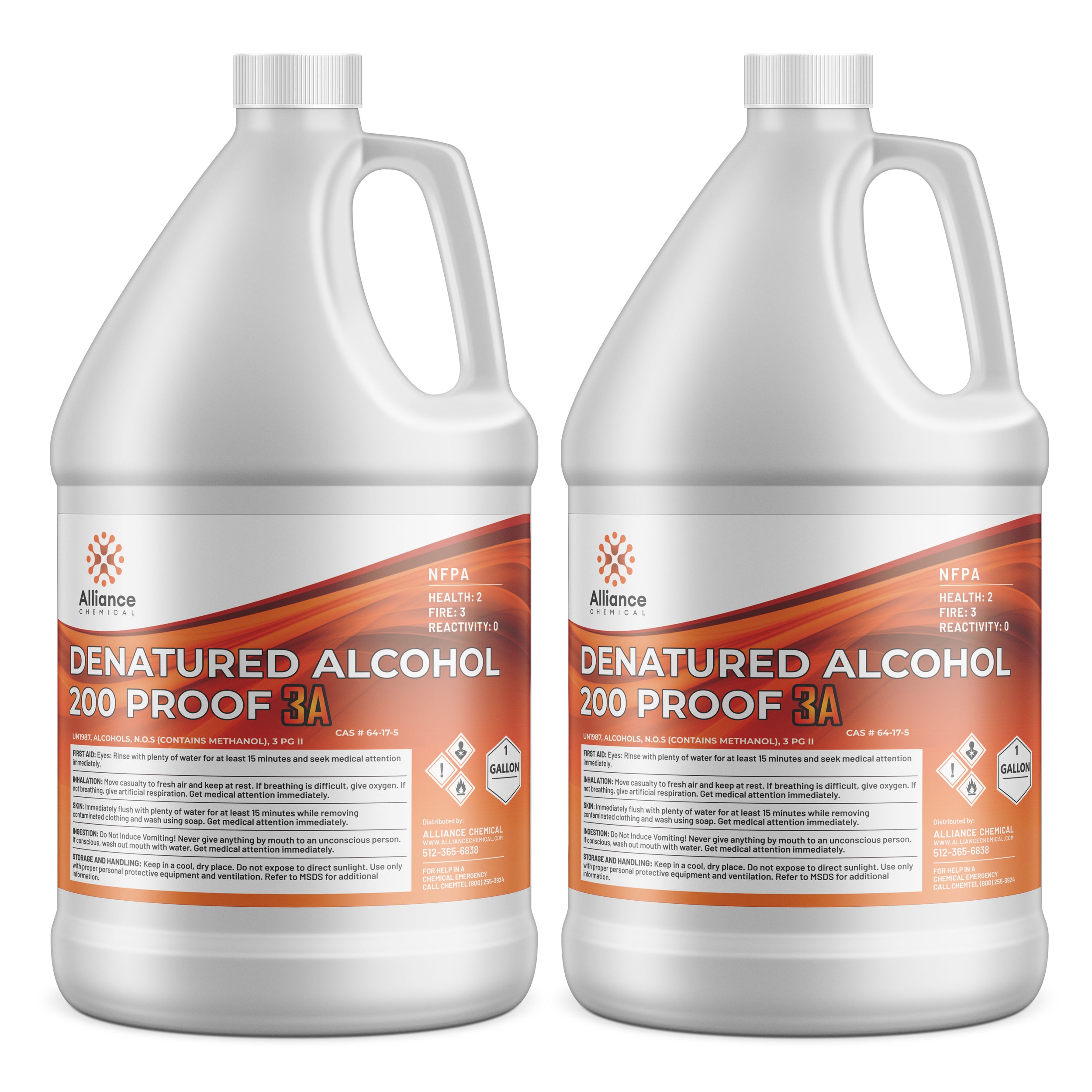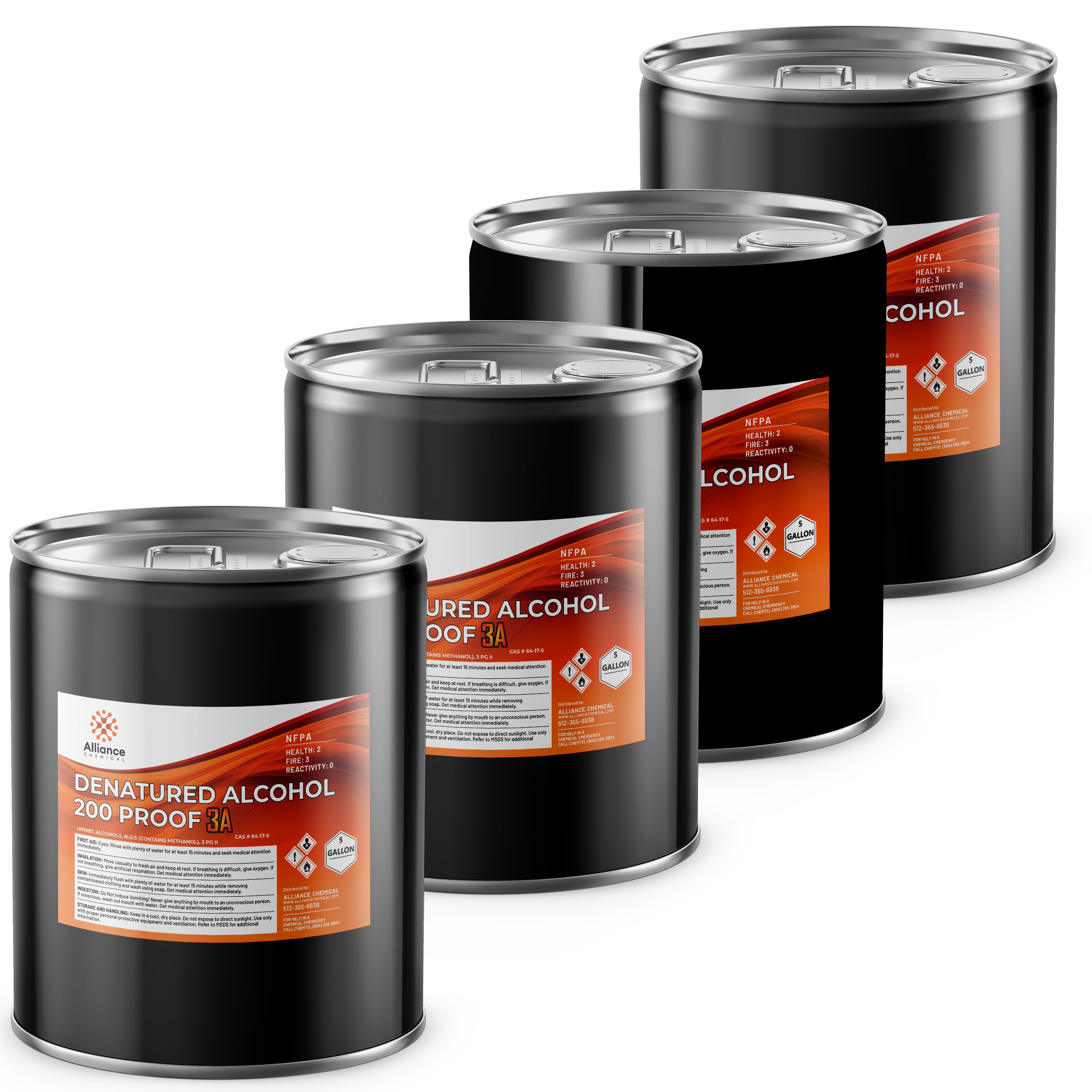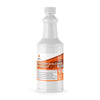Denatured Alcohol 200 Proof 3A
Category : Alcohols
$18.00
Unit price
Quantity
Ask a question
Product Overview
Denatured Alcohol 200 Proof 3A is a high-purity ethanol solution designed to be non-consumable through the controlled addition of denaturants. This reagent meets ACS Reagent Grade and USP-NF Monograph standards, reflecting stringent quality controls suitable for analytical and industrial use. The product provides excellent solvency, low water content, and favorable physical properties that support reliable performance in a range of laboratory and manufacturing processes. The assay typically targets 99.7 wt% ethanol with minimal water (<0.02 wt% typical, <0.05 wt% max by Karl Fischer titration), enabling precise formulation and consistent results in HPLC mobile phases, extractions, and cleaning applications. The material is supplied as a clear, colorless liquid with a characteristic alcoholic odor and a boiling range of 78–80°C, ensuring predictable behavior under standard operating conditions.
Denatured Alcohol 200 Proof 3A is commonly used as a solvent in analytical, pharmaceutical, and industrial settings due to its low boiling point, miscibility with water and most organic solvents, and compatibility with common containment materials when stored and handled per SDS guidelines. Its seasonal stability and low aldehyde content (typical 2 ppm, max 10 ppm) support reliable quality control in sensitive workflows, while maintaining strong solvency for a broad spectrum of solutes. This product is suitable for use under inert atmosphere where applicable to minimize oxidation and degradation, and it lines up with established industry practices for denatured ethanol products used in solvent-based formulations and cleaning regimes.
Key Properties
- Appearance: Clear, colorless liquid
- Chemical Formula: C₂H₆O
- Molecular Weight: 46.07 g/mol
- Boiling Point: 78–80°C
- Specific Gravity / Density (25°C): 0.789 g/mL
- Flash Point (Celsius): 11°C
- Vapor Pressure (20°C): 59 mmHg
- Viscosity (25°C): 0.89 cP
- Refractive Index (20°C): 1.361
- Water Content (Karl Fischer): Typical 0.02 wt%, Max 0.05 wt%
- Aldehydes: Max 10 ppm (typical 2 ppm)
- Assay (wt% EtOH): 99.7% (typical); Range 99–100.5%
- Chlorine / Bromate / Chlorate: All typically 0, IC-confirmed
- CAS: 64-17-5
- Boiling Range Note: ISO-compliant reference for ethanol
Common Applications
- HPLC Mobile Phase: Commonly used as a mobile phase component in reversed-phase chromatography for separating organic compounds.
- Solvent for Extraction: Utilized in the extraction of active pharmaceutical ingredients from plant materials.
- Cleaning Agent: Effective for cleaning laboratory glassware and equipment due to its solvent properties.
- Cosmetic Formulation: Used as a solvent in the formulation of various cosmetic products.
- Fuel Additive: Serves as a component in fuel formulations to enhance combustion efficiency.
Safety Precautions
Handling of Denatured Alcohol 200 Proof 3A should be conducted in well-ventilated areas with appropriate containment to manage flammable vapors. Store in cool, well-ventilated spaces away from heat sources, with containers made of HDPE or glass. Keep away from strong oxidizers and acids; wear proper PPE including chemical-resistant gloves and safety goggles. Keep away from open flames and sparks, and implement grounding and bonding when transferring to minimize static ignition risk. Follow the SDS for specific storage and exposure controls.
In the event of exposure, the SDS specifies first aid measures: eyes—rinse cautiously with water for several minutes; skin—wash with soap and water; inhalation—move to fresh air and seek medical attention if symptoms persist; ingestion—do not induce vomiting, rinse mouth, and seek medical attention. Transportation is described as UN 1170, Ethanol, Class 3, PG II. Emergency procedures should align with local regulations and GHS hazard communication requirements (Flam. Liq. 2, Eye Irrit. 2, STOT SE 3).
Benefits
✔ High Purity Ethanol – ACS/USP-grade ethanol with minimal water and low aldehyde content supports accurate analytical and formulation work.
✔ Reliable Solvent Performance – Excellent solvency for organic compounds, rapid evaporation, and compatibility with common solvents and materials.
✔ Consistent Quality – Precise tolerances (assay 99.7%, water 0.02% typical) and robust QC testing (GC for aldehydes, Karl Fischer for water).
✔ Regulatory Alignment – Meets ACS Reagent Grade and USP-NF Monograph standards; suitable for institutional and industrial use.
| Property | Value |
|---|---|
| Molecular Weight | 46.07 g/mol |
| Formula | C2H6O |
| Assay | 100% |
| Grade | ACS |
| Flash Point | 13 |
| Form | Liquid |
| Solubility | Miscible with water and many organic solvents |
| Appearance | Clear, colorless liquid |
| Melting Point | -114 °C |
| Boiling Point | 78 °C |
| Specific Gravity | 0.789 |
| Industry | Industrial, Other |
Compare Products
| Price |
|---|
| SKU |
| Rating |
| Discount |
| Vendor |
| Tags |
| Weight |
| Stock |
| Short Description |

